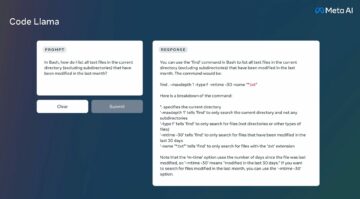
Without a doubt, publishers are well-placed to harness the relationship with their audience – possessing the means to collect and build the strong first-party data sets required to deliver personalized experiences and power various revenue streams.
But, as the industry moves further away from cookie-based targeting – and Google speaks out against alternative ID solutions for cross-site tracking, limiting the ability to scale – publishers must find new ways of boosting and communicating the value of their inventory while also ensuring monetization strategies align with the user experience.
This is where artificial intelligence (AI) comes in, playing a key role in achieving this balance.
Opportunities aren’t disappearing; they’re just different
Today’s advertising landscape is increasingly complicated. Most digital ad spend goes to targeting and retargeting specific individuals, which relies on consistent visibility and computability of identity. Google’s move has put this approach on the ‘endangered’ list and will likely add to existing fragmentation. Constructing addressable identifiers was already difficult – with users spread across laptops, mobile, CTV, and other smart gadgets – but now, brands will also have to switch between different technologies and systems when using Google or the open web.
On the publisher side, this will affect personalization strategies as a means to deliver value, both from a content and advertising perspective. However, it also offers publishers an opportunity to play a more central role in providing access to addressable audiences for advertisers looking to optimize ad spend through content-rich experiences.
By using AI technology, publishers can facilitate the data onboarding process and match brands’ first-party data with their own addressable audiences with a higher accuracy rate than other non-AI tools. When applied in conjunction with cleanroom technology, this provides a privacy-safe and publisher-controlled space for data collaboration that matches audiences on a similarity-base, enabling incremental reach in private marketplaces.
AI offers a route to effective reach enhancement
The two core aces publishers hold are, of course, content and consent. Producing engaging content helps win user engagement and loyalty, while user-centric consent increases the chances of building trust and gaining permission to collect and use much sought-after first-party data. On this basis, publishers are in a good position to build on the foundation of their first party-data strategy to deliver basic reach for known, logged-in users.
The issue, however, lies with the limitations of consented data. Not all users will be willing to share data. In fact, it’s widely considered that just 2-10% of consumers share details such as age and gender.
To sustain optimal reach, publishers will therefore need to explore options beyond the log-in walls. Those keen to keep content as openly available as possible will likely turn to using the data processing and enhancement capacity of AI to build on first-party data strategies. High on the list of uses is predictive modeling, powered by machine learning. By taking consenting user attributes as an analytical base, it allows for the accurate extension of addressable reach – in line with customized and verifiable accuracy rates set by each publisher – even when deterministic data is lacking.
For instance, when used in tandem with real-time contextual data, AI can drive impression-level targeting without user-level data. With every use case, the main appeal is that an emphasis on inferred— not declared — characteristics keeps privacy front and center, enabling personalized experiences and targeting without hindering the user experience.
An example of how this could work in the real world is with recruitment data. Publishers with recruitment advertising departments can harness tools to integrate data from job seekers to display highly targeted ads to relevant candidates. AI can then be used to scale reach, expanding the audience based on the initial recruitment data to reach other statistically relevant consumers without impacting the user experience.
What next for the industry?
Gazing into the collective industry crystal ball is never easy, but there are signs of which way the winds are blowing. For instance, the latest proposal to emerge from Google’s Privacy Sandbox initiative, FLoC, suggests the use of machine learning analysis to create a cohort-based approach to targeting.
For publishers previously wary of AI-assisted audience syndication, this could be good news: allowing them to build stronger ties with advertisers and pave the way to scale audiences. Setting aside the debate around whether or not FLoC will be anti-competitive, there is no denying that it will likely drive further development of machine-learned segmentation and personalization, which is a good move for the industry.
In a continuously changing industry, AI ultimately provides an opportunity for publishers to be optimistic about their ability to balance personalized experiences with privacy-first monetization strategies. The advanced solutions offered by AI empower publishers to forge their own path and equip them with the tools required to show that they are not merely providers of first-party data but lynchpin to scalable privacy-safe solutions.
- 11
- access
- Ad
- Ads
- Advertising
- AI
- All
- Allowing
- analysis
- appeal
- around
- artificial intelligence
- Artificial intelligence (AI)
- audience
- boosting
- brands
- build
- Building
- Capacity
- chances
- collaboration
- consent
- Consumers
- content
- Crystal
- data
- data processing
- debate
- Development
- digital
- Effective
- empower
- expanding
- Experiences
- First
- Gadgets
- Gender
- good
- High
- hold
- How
- HTTPS
- Identity
- image
- industry
- Initiative
- Intelligence
- inventory
- IT
- Job
- job seekers
- Key
- laptops
- latest
- learning
- Line
- List
- Loyalty
- machine learning
- Match
- Mobile
- modeling
- move
- moves
- news
- Offers
- Onboarding
- open
- Opportunity
- Options
- Other
- personalization
- perspective
- power
- privacy
- private
- proposal
- publishers
- Rates
- real-time
- recruitment
- revenue
- Route
- sandbox
- Scale
- set
- setting
- Share
- Signs
- smart
- Solutions
- Space
- spend
- spread
- Strategy
- Switch
- Systems
- Technologies
- Technology
- Tracking
- Trust
- users
- value
- visibility
- web
- win
- Work
- world











